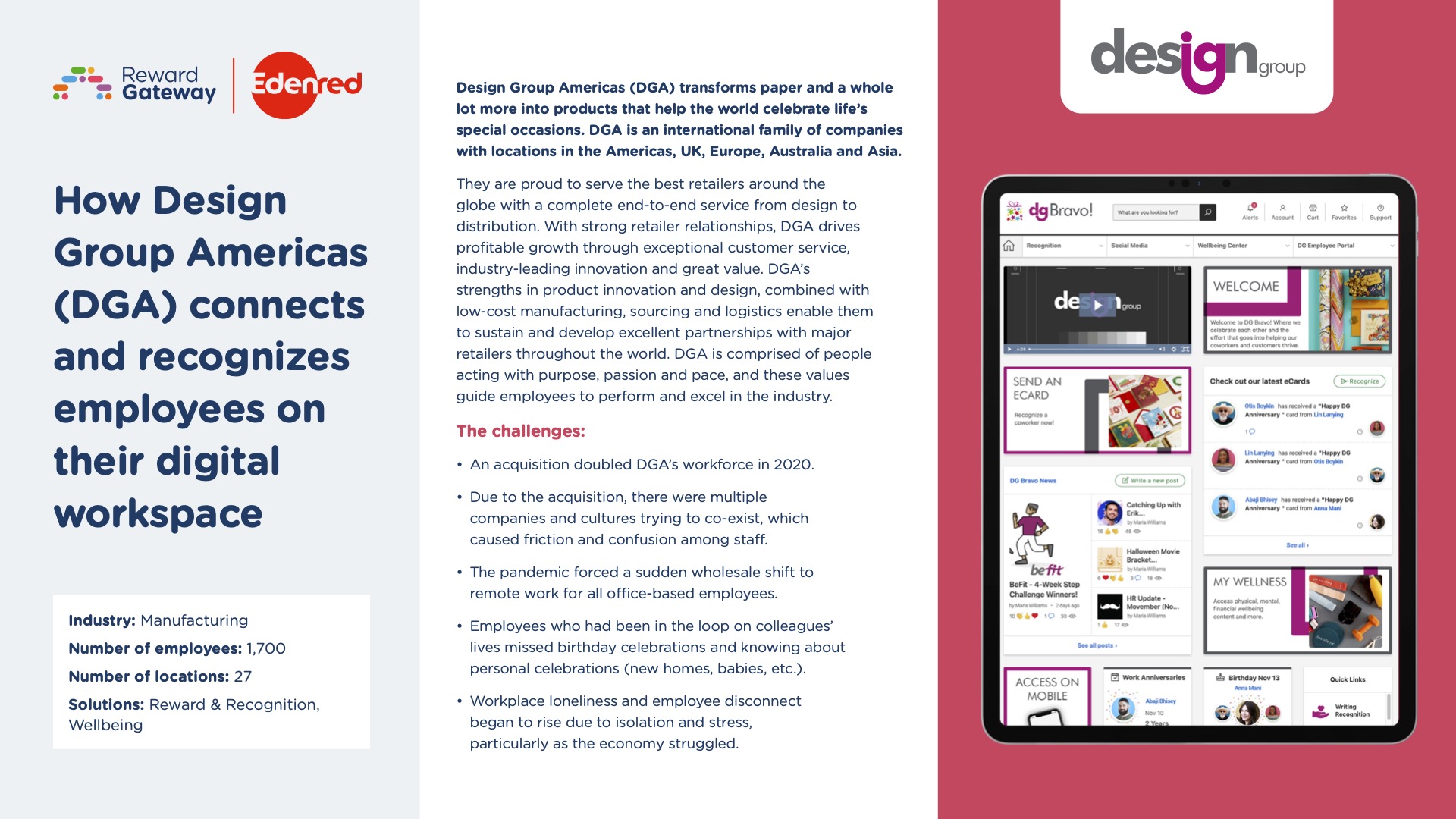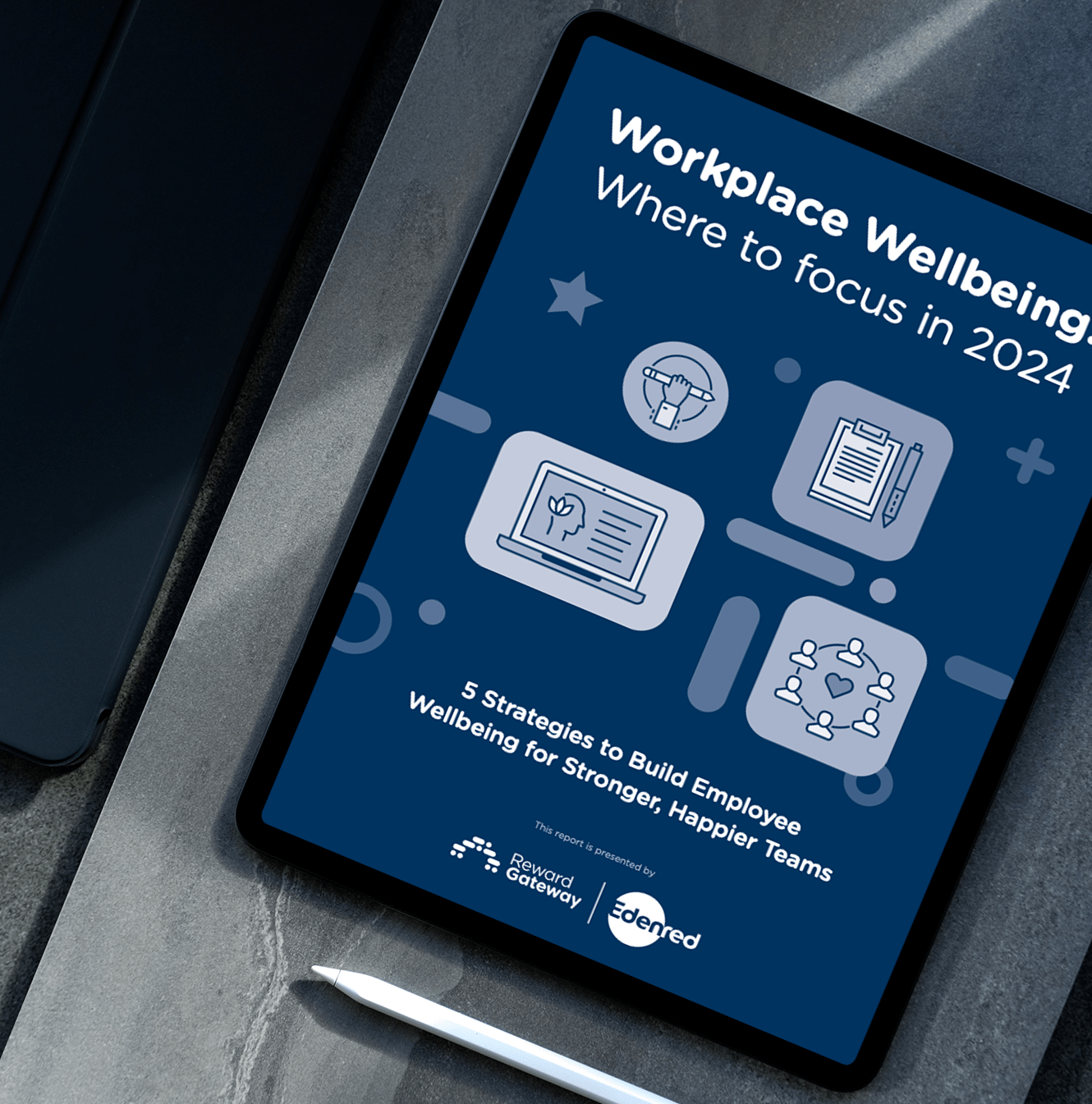
Southern New Hampshire University (SNHU) was founded in 1932 as a two-room business school, specifically focused on accounting at that time. The organization launched its first online program in 1990 and has been an innovator in higher education ever since, with international and national programs and robust support services for its 150,000+ learners, making it unique in the market. After becoming a distributed workforce for the first time due to the pandemic, the organization needed to create the first of its kind, university-wide recognition program to reinforce its culture and values.
Industry:
Education
Number of employees:
4,400
Number of companies:
1+ remote workers
Platform features:
Employee wellbeing
 The challenge:
The challenge:
At SNHU, a strategic objective is to attract, develop, empower and retain world-class talent to deliver on its mission, which is to transform the lives of its learners.
In early 2020, Jenn and her team identified that recognition was an area of opportunity for the university. The COVID-19 pandemic accelerated the need for a more modernized solution that would help embed a culture of appreciation, especially with this being the first time they were all distributed.
To meet this objective, Jennifer LaFountain, Director, People Experience at SNHU, started looking into recognition programs along with the People Experience Team to better understand what their employees were looking for.
They officially kicked off a project to develop a university-wide program, gathering a cross-functional team of people, with the first task of understanding the current state of recognition at the organization. The team created a “recognition inventory” and held interviews and focus groups to identify what recognition looked, sounded, and felt like for employees day-to-day at SNHU.
The employee feedback highlighted five important pieces that would influence the team’s next steps:
| 1. Recognition was more important than ever before to employees who wanted to not just feel appreciated, but to feel connected to one another and to the culture of SNHU. |
| 2. There were over 200 individual recognition programs at SNHU, meaning the experiences were inconsistent. |
| 3. Recognition was heavily focused on one-time gifts (generally gifts from leadership or on-site events, which wouldn’t work with the new distributed workforce reality). |
| 4. 26% of the programs were tied to one-off performances or what the employee produces and not necessarily what an employee contributes to the university on an ongoing basis. |
| 5. There was a lack of cross-functional recognition and little insight into how much was being spent on recognition due to departmental silos. |
All of this feedback validated that SNHU needed a redesign in the way the organization recognized, and two short months later the project became a top priority.
The approach:
Outlining the goals for the recognition platform
All of the research the team collected supported the idea of having a robust employee recognition program in a distributed landscape, which is what Jenn and team brought to the Leadership Team. As a part of the proposal to leadership, Jenn and team developed a plan to operationalize the program. First, they decided on a phased approach – starting with non-monetary, peer-to-peer recognition as a foundation and the second phase aimed at redesigning the service awards.
Jenn and team researched recognition providers and chose Reward Gateway for its positive user experience, customization capabilities, flexibility, transparency, choice and alignment of values.
Fast forward to September 2021 and the employee recognition program, “Shine,” was born from invaluable employee feedback. Shine reflects SNHU’s employer brand and is an extension of its company culture.
“One of the reasons we love Reward Gateway as a platform and a partner is because of how much control we have over the branding of our site. Our brand is very precious to us and we wanted to honor that. We also wanted Shine to look like an internal website, like it's always been a part of our technological footprint. You would not know that it's an external site and we're very excited about that,” Jenn says.
Alongside the need for a phased approach, the team reviewed their retention data and learned that 52% of employees who leave voluntarily do so within the first three years. The team was missing an opportunity to recognize these employees because the service recognition previously didn’t start until year five. Jenn adds, “We realized that if we were intentional about the changes we wanted to make to the recognition program, we could actually use it as a retention tool to future-proof the organization.”
This led the team to focus on timing, transparency and choice as the three pillars of the recognition program, with a focus on recognizing employee milestones.
- Timing: The team created real-time, scheduled recognition for all of the current milestones – ranging from one to 50 years. Each of these eCards is scheduled and sent through the system automatically. They include manager notifications and custom messages, which meant no more manual work for the People Experience Team at SNHU. All of the service recognition programs have a monetary value attached to them, furthering their use as a critical retention tool.
- Transparency: The team published the gift amounts for each milestone and also streamlined and clarified the tax language, which was included in the direct message that employees received from Shine, eliminating any potential questions for the SNHU finance team!
- Choice: The Shine platform gives employees hundreds of redemption options to choose from, including e-gift cards, countless options from Amazon or even the ability to donate an award to charity.
 The team wanted to continue the tradition of a culminating event, but knew that they couldn't do it onsite. They piloted their first-ever virtual service recognition celebration. Over 800 employees participated and there were guest speakers, networking and video messages from employees.
The team wanted to continue the tradition of a culminating event, but knew that they couldn't do it onsite. They piloted their first-ever virtual service recognition celebration. Over 800 employees participated and there were guest speakers, networking and video messages from employees.
Jenn adds, “It was a huge success and it proved that we could do it all in a distributed way. We did it with zero spend and were able to use what we had. We're going to continue to iterate on it and do as much as we can within Shine.”
On SNHU’s Shining Stars wall, employees will find a variety of eCards, including:
|
Greetings-based eCards: There are 11 everyday greeting cards that are meant for touch points of appreciation. These encompass everything from coming back into the office to happy birthday. Jenn and team are planning to do a refresh based upon usage data and employee feedback. |
|
Appreciation Preferences: These eight eCards were born from the team’s research that highlighted how appreciation in the workplace must be meaningful for it to drive and produce results. The team asked employees what “meaningful” actually meant during focus groups and the result was the adoption of appreciation languages which they call “preferences.” These eight eCards provide someone appreciation in the way that is most meaningful to them. For example, an employee can send someone an eCard offering up a 15-minute coffee chat as quality time. |
|
Values-based eCards: SNHU has five core values that are deeply embedded in everything that the organization does, such as “do the right thing every time” or “exhibit grit.” These are reflected in the branded eCards and employees can send them at any time, from any device. |
 In addition to R&R tools, Shine also houses employee communications tools. There are two main blogs on the platform that keep employees in the loop no matter where they’re working from:
In addition to R&R tools, Shine also houses employee communications tools. There are two main blogs on the platform that keep employees in the loop no matter where they’re working from:
- SNHU Glow Up: Recognizing your impact! - Jenn and team highlight and reinforce their Admissions Counselors’ positive behaviors by connecting them to the voice of their learners across the organization.
- Shine Spotlight - These blogs highlight key contributors in the organization or important happenings and celebrations. For example, Jenn and team used the blog for an Employee Appreciation Week takeover to shine a spotlight on various team members. They also used this blog to celebrate employee graduates, which has been extremely popular.
The results:
Prior to launch, measuring the success of the platform was imperative so the team used some internal benchmarking from a previous test and created KPIs to drive adoption within 30, 60 and 90 days. Jenn and team set a self-identified KPI of having at least 30% of the 4,400 employees login and send an eCard within the first 30 days.
And the team surpassed that goal. Three weeks post-launch in September 2021, 48% of SNHU employees logged in and 46% of them were sending and receiving recognition. Another goal for the platform was to increase the percentage of employees that have sent recognition.
Fast-forward to March 2022, and 76% of the distributed employees have visited Shine to see the great work occurring across the university. In addition, 85% of employees have sent and/or received recognition. There have been over 16,000 eCards sent and/or received since Shine launched, with 57% of those being sent by managers within the organization.
Jenn adds, “One of the big surprises for me personally is that the eCards are being sent more by leaders than by individual contributors. This is a testimony to the fact that our leaders are using this platform and program to help drive behaviors and results on their team.”
Since the beginning of 2022, SNHU has spent over $19k through reward and recognition and issued almost 2,000 awards to employees. Another huge piece to celebrate here is the number of comments and reactions that employees have been contributing to the appreciation and recognition moments within the platform. There have been over 18,000 total likes, reactions and comments on the social recognition wall, helping the team deliver on creating more transparency and cross-functional recognition across the university. “It's just straight up fun to see how many folks are engaging with one another, even on something as simple as sending a thank you card,” Jenn adds.
SNHU was able to utilize the service recognition program as a retention tool by focusing on the three pillars of timing, transparency and choice. After launching Shine, the team saw a 6+ point increase in their annual employee opinion survey related to recognition. In addition, in a pilot group of about 100 employees (whose leader is committed to using Shine weekly), they now have fewer eNPS detractors, which is 8% lower than the university overall. Their eNPS increased by eight points and their overall eNPS is higher than the university as a whole.
Jenn adds, “Employees have been incredibly grateful and excited about how easy the platform has been to use. The bottom line was our employees told us that they wanted choice and we were able to deliver, which will improve the employee experience and in the long run employee retention.”
 What’s next for SNHU?
What’s next for SNHU?
While phase three will be focused on monetary recognition, Jenn and team also want to embrace the success that the organization has had and grow what’s already been built. The team is working with senior leaders to help them drive usage within their teams and improve business results using Shine.
One of the more recent developments is an employee onboarding project that focuses on the employee lifecycle and what onboarding currently looks like at SNHU, which Shine is a large part of.
Jenn says, “Our goal is to add Shine behaviors and best practices to our Talent Development programs, at all points of the employee lifecycle. We are also working with our three largest business units to develop custom solutions to drive recognition and usage. Lastly, we are working with internal stakeholders to build fun ways to engage with Shine.”
Request a demo today
See how Reward Gateway can help you make your organization a better place to work by scheduling a demo with one of our friendly employee experience experts.


